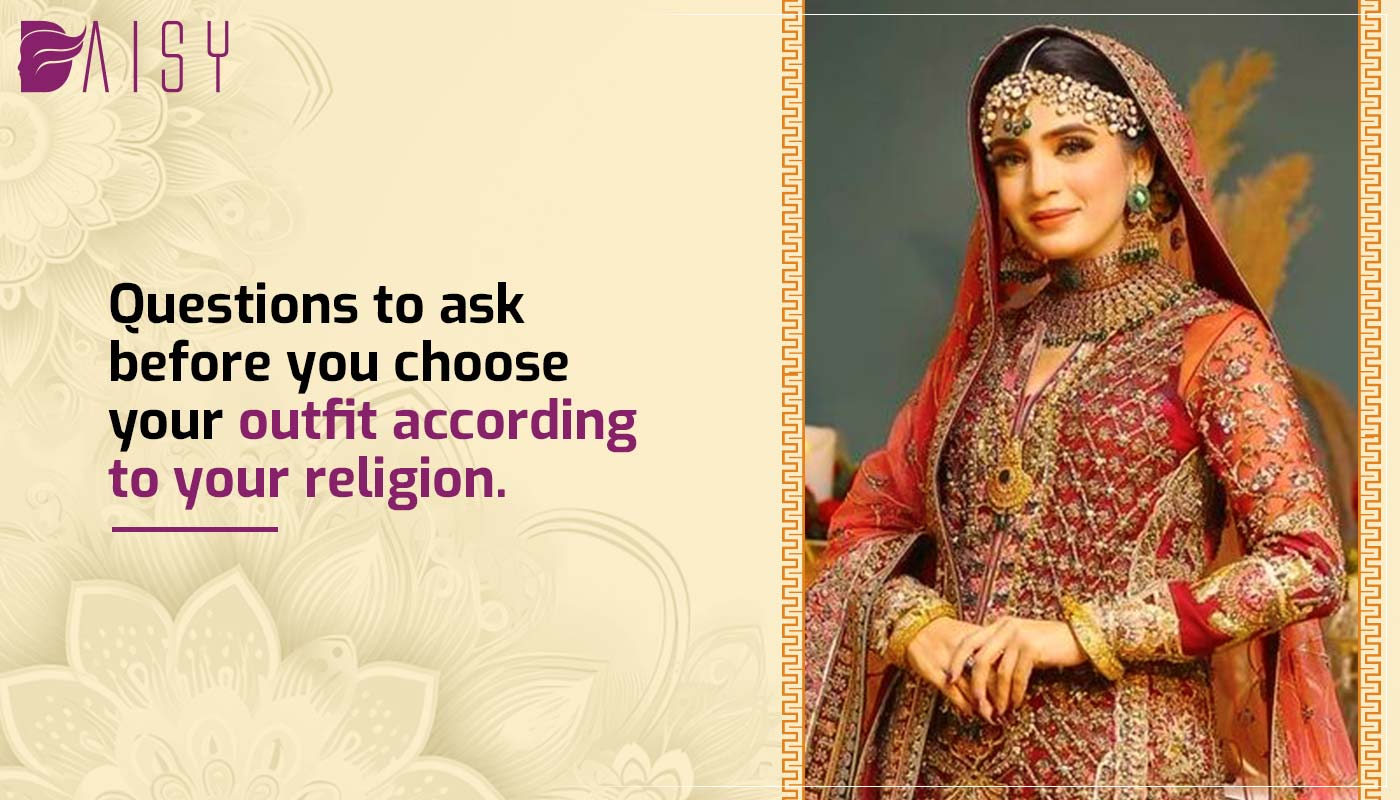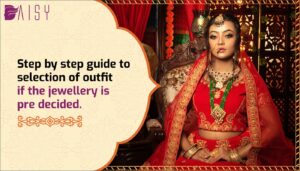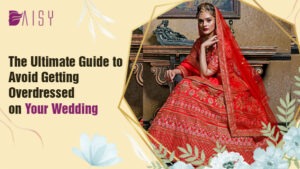The majestic grandeur and diversity of Indian weddings are beautifully reflected in the myriad traditions and cultures that the country embraces. A crucial aspect of any Indian wedding is the bridal attire, which resonates deeply with the religious and cultural beliefs of the bride. Each religion in India has its unique customs and preferences when it comes to the bridal ensemble. To make the most fitting choice, here are the essential questions to consider before selecting your Indian bridal outfit based on your religion
1. Punjabi wedding
- Do I prefer a traditional Punjabi Salwar Kameez or Lehenga? While both are popular choices, knowing your preference simplifies the selection process. Traditionally brides used to choose a Patiala suit for her wedding but brides these days opt for a heavy lehenga which is in trend though keeping the rich Punjabi look enhanced.
- The importance of the Chunni or Dupatta? The way the Chunni or Dupatta is worn varies among Sikh brides. Deciding on its style is significant. For the Anand Karaj ceremony, she keeps the veil over her head up to the forehead for the entire ceremony.
- Does my choice of color align with Sikh traditions? Sikh weddings often embrace vibrant colors, and understanding their cultural relevance aids in choosing the right shade. A Punjabi bride prefers wearing a red, maroon or pink lehenga on her wedding day. However, there is no restriction as such and she can wear any colour she wants only avoiding the black and white color.
- Am I incorporating any specific religious symbols or motifs? Many Sikh brides include religious symbols or motifs in their attire as a mark of respect and tradition. Though a bride carries a lot of heavy jewelleries, a Punjabi bridal look isn’t complete without kalire and chooda.
- Preference between heavy embellishments or minimalistic designs? A Punjabi bridal Outfit ranges from heavily embellished to minimalistic designs with royal colors. Having a clear idea of the desired bridal look will help you achieve the right set of outfits. The beautiful blend of rich wedding traditions and the flawless beauty of Punjabi brides can leave anyone spellbound.
2. Bengali wedding
- Is red the traditional color for Bengali brides? A Bengali bride is prominently draped in a beautiful bold red coloured Banarasi saree meaning it is auspicious for the occasion. As Red is a predominant color, but some Bengali communities embrace other hues as well.
- Saree or Lehenga: Which is more culturally significant? While red Banarasi sarees are popular, but some opt for lehengas as well in the look. Heavily embroidered red Banarasi saree draped in typical Bengali style with box pleats at the front; A red veil covering just the back of her head gives the bride a traditional look.
- Importance of Shakha-Pola or other traditional bangles? Post the Gaye Holud and holy bath, she wears the ‘Shakha’ (Conch shell) and ‘Pola’ (Red coral) bangles, akin to a Punjabi or Sikh bride’s marriage Chura. Shakha-Pola holds immense cultural significance for Bengali brides.
- Does the community have specific embroidery or weaving styles? Familiarizing oneself with kantha work, silk or a Jamdani saree or other unique taant embroidery styles prevalent in Bengali bridal attire is beneficial.
- Are there any customary headpieces or adornments? Some Bengali brides adorn themselves with bridal mukut made of Sholapith or Indian cork headpieces, adding cultural richness to the ensemble. So, get yourselves decked up like a true Bong ‘Bodhu’ beauty!
3. Bihari wedding
- Are there specific colors or fabrics typical in Bihari bridal attire? A Bihari bride can choose for a typical red bridal lehenga though for the reception but the bright yellow saree is all the beauty she adorns for her wedding called ‘piyari’ meaning yellow coloured outfit.
- Is the choice between saree and lehenga significant in my community? Bihari brides often prefer sarees like the traditional Paithani or Bhagalpuri silk. Knowing the preferred garment is essential, but these days there are a variety of options in lehenga also available.
- What about jewellery preferences? Some communities in Bihar have unique jewellery styles. Authentically a bride is all jewelled up with gold ornaments for the wedding especially a ‘nath’ and a ‘maangtika’ which signifies the suhaag. Also a silver toe-ring which is importantly put in the bride’s toe symbolizing her marital status.
- Are there any distinctive embroidery or motifs typical in Bihari bridal wear? The popular choices among saree are known for its rich silk fabric and intricate gold or silver zari work. It’s characterized by its beautiful pallu and borders, often adorned with intricate motifs, making it a coveted choice for brides. Intricate zari work, resham embroidery, sequins, stones, and mirror work adorn the sarees, creating a dazzling effect that beautifully complements the bride’s radiance.
- Does my community have any specific draping styles or accessories? Many Bihari brides incorporate family heirlooms like ancestral jewellery. They also drape the saree in their regional way called a ‘seedha pallu’ for all the rituals which gives her a traditional bride look.
Each community in India cherishes its unique heritage and traditions, intricately woven into the fabric of their bridal attire. By asking these vital questions, brides can honor their cultural legacy while adorning themselves in attires that reflect both tradition and personal style, adding a profound essence to their wedding celebrations.













